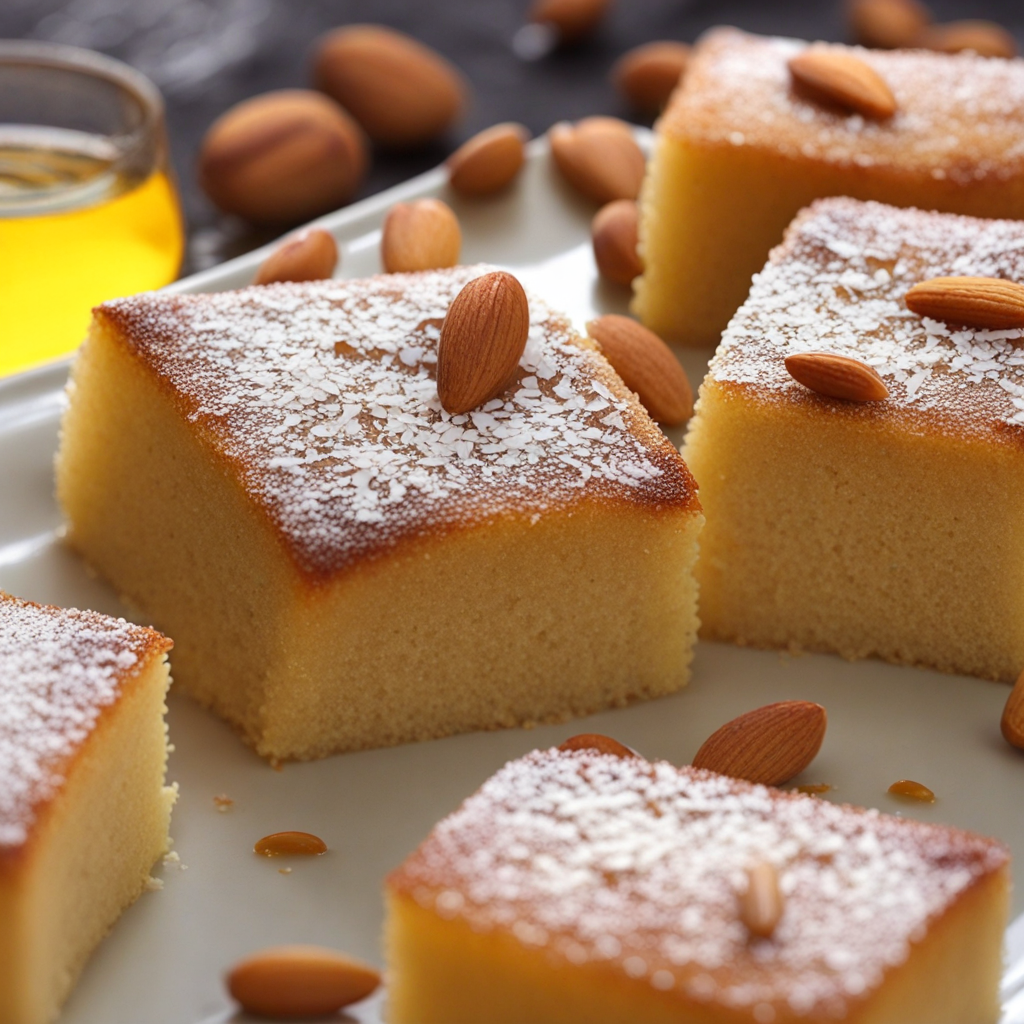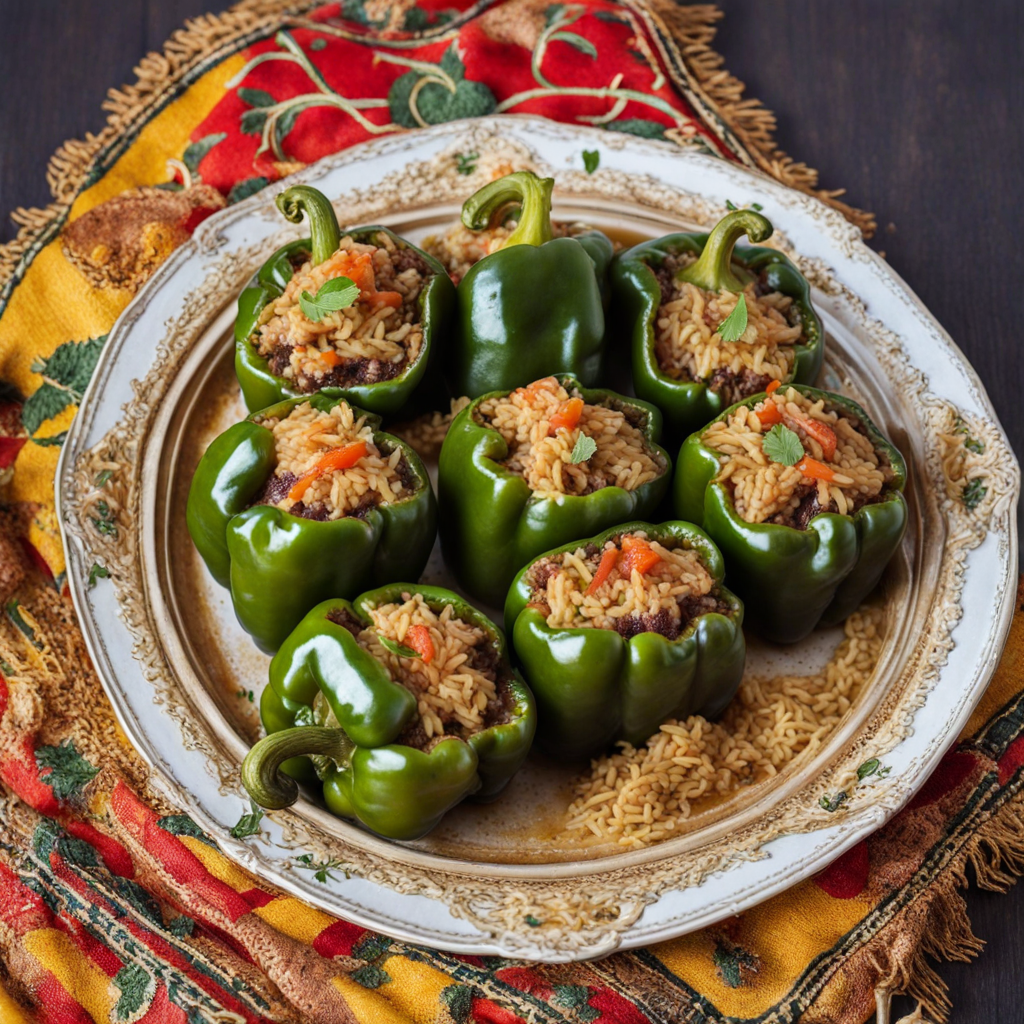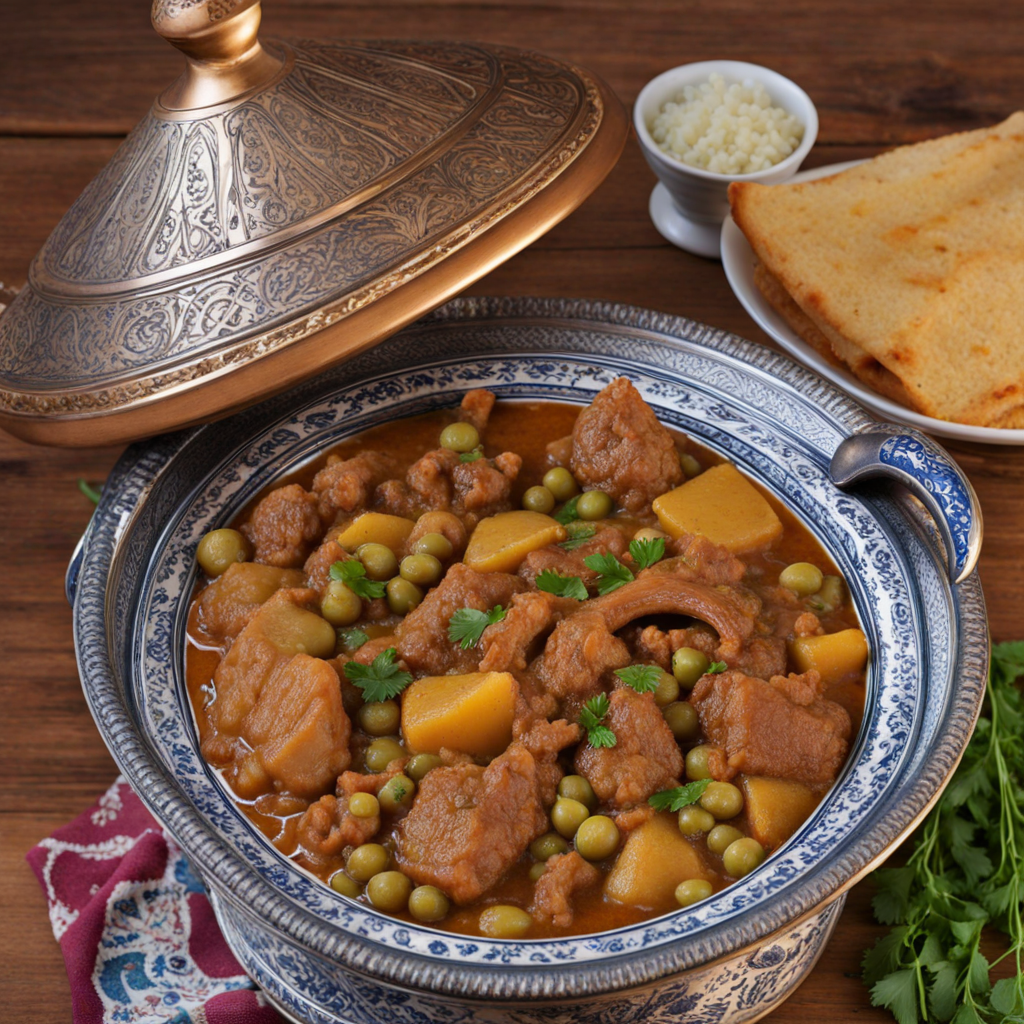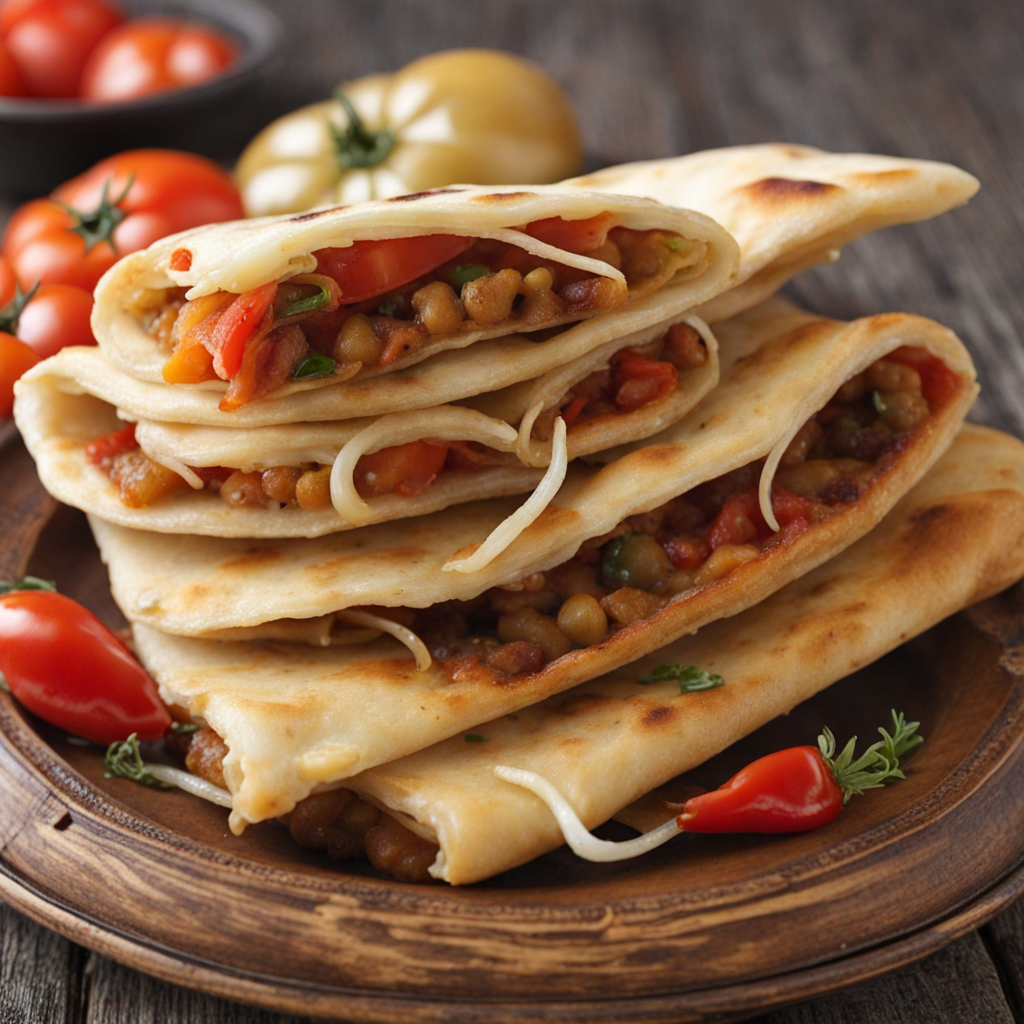Zlabia
Zlabia is a delightful Algerian dessert that is both visually appealing and deliciously sweet. This deep-fried pastry is made from a simple batter consisting of flour, yeast, and water, which is skillfully piped into hot oil, creating its unique spiral shapes. The result is a golden-brown treat with a crispy exterior that gives way to a soft, airy interior. Once fried, Zlabia is generously soaked in a warm syrup made from sugar, water, and a hint of citrus, often flavored with orange blossom or rose water, enhancing its aromatic profile and adding a luscious sweetness. The texture of Zlabia is one of its most captivating features. As you take a bite, the contrasting layers of crispiness and fluffiness create a satisfying experience that melts in your mouth. The syrup not only adds a glossy finish but also seeps into the pastry, infusing it with a fragrant sweetness that is both indulgent and comforting. It's common to find Zlabia served during special occasions, particularly during Ramadan, where it complements the festive atmosphere and brings people together over shared flavors and traditions. In Algeria, Zlabia is often enjoyed alongside a cup of traditional mint tea or coffee, making it a perfect accompaniment for social gatherings. Its vibrant orange hue and intricate patterns make it a feast for the eyes, while its rich taste offers a unique reflection of Algerian culinary heritage. For anyone looking to explore new flavors, Zlabia is an irresistible invitation to experience the sweet side of Algerian gastronomy, leaving a lasting impression of warmth and hospitality.
How It Became This Dish
The Sweet Journey of Zlabiya: A Culinary Heritage from Algeria #### Origins and Historical Context Zlabiya, a beloved Algerian sweet, has a history rich in cultural significance and culinary evolution. Its origins can be traced back to the medieval period, influenced by the confluence of various cultures in North Africa, particularly during the Islamic Golden Age. The dish is believed to have been derived from the Arabic word "zalabia," which refers to a deep-fried dough that is often soaked in syrup. This culinary tradition aligns with similar desserts found across the Arab world, including Tunisia and Morocco, but Algeria has given it a unique twist that reflects its diverse heritage. The Berber, Arab, and Ottoman influences have significantly shaped Algerian cuisine, and zlabiya is a testament to this rich tapestry of flavors and techniques. The dish gained prominence in the region during the 15th century when the Ottoman Empire expanded its influence across North Africa. The introduction of sugar and the refinement of pastry techniques during this time allowed for the development of various sweets, including zlabiya. #### Cultural Significance Zlabiya is more than just a dessert; it is an integral part of Algerian culture and social life. Traditionally, zlabiya is prepared and served during festive occasions, especially during the month of Ramadan. The act of breaking the fast with sweet treats is a cherished tradition, and zlabiya holds a special place in this ritual. The golden, crispy exterior and syrupy sweetness of zlabiya symbolize joy and celebration, making it a staple at family gatherings, weddings, and religious festivals. In addition to its festive significance, zlabiya is tied to communal and familial bonds. The preparation of zlabiya is often a collective effort, involving family members or neighbors who come together to share in the cooking process. This communal aspect fosters a sense of belonging and unity, reinforcing the importance of family ties in Algerian culture. #### Ingredients and Preparation Zlabiya is made from simple yet essential ingredients: flour, yeast, water, and a pinch of salt. The dough is typically flavored with a hint of saffron or orange blossom water, giving it a distinct aroma. Once the dough is prepared, it is allowed to rise before being shaped into spiral or circular forms. The unique preparation method involves deep-frying the dough in hot oil until it achieves a crispy golden-brown exterior. After frying, zlabiya is soaked in a syrup made from sugar, water, and sometimes lemon juice or rose water, which enhances its sweetness while adding a fragrant note. The final touch often includes a dusting of powdered sugar or crushed nuts, elevating the presentation and flavor profile. #### Evolution and Modern Variations Over the centuries, zlabiya has evolved to adapt to changing tastes and culinary practices. While the traditional recipe remains popular, contemporary variations have emerged, incorporating local ingredients and innovative techniques. For instance, some modern bakers experiment with different flours, such as semolina or whole wheat, to create healthier versions of zlabiya. Others have introduced fillings, such as almond paste or fruit preserves, that add a delightful surprise to the traditional sweet. The globalization of food culture has also impacted zlabiya's presence beyond Algeria. As Algerian diaspora communities have spread across Europe, the Middle East, and North America, they have brought their culinary traditions with them. Zlabiya has found its way into international markets, where it is often featured at cultural festivals and food fairs, introducing a wider audience to its unique flavors. #### Zlabiya in Contemporary Algeria In contemporary Algeria, zlabiya continues to be a beloved treat, especially during Ramadan. Street vendors often set up stalls selling fresh zlabiya, drawing in crowds eager to enjoy this sweet delight. The dish has also made its way into modern cafes and restaurants, where chefs incorporate contemporary plating techniques and fusion elements, ensuring that zlabiya remains relevant in today's culinary landscape. Moreover, the rise of social media has allowed home cooks and professional chefs alike to showcase their zlabiya creations, leading to the sharing of recipes and techniques across platforms. This has spurred a renaissance of interest in traditional Algerian sweets, with zlabiya at the forefront of this movement. Food bloggers and influencers now share not only the recipes but also the stories and memories associated with zlabiya, further embedding the dish into the fabric of Algerian identity. #### Conclusion Zlabiya is more than just a sweet treat in Algeria; it embodies the rich history and cultural heritage of the nation. From its medieval origins to its modern-day adaptations, zlabiya serves as a delicious reminder of the diverse influences that have shaped Algerian cuisine. Whether enjoyed during Ramadan or at a family gathering, zlabiya continues to bring people together, fostering connections and preserving traditions. As we savor this delightful dessert, we not only indulge in its sweet flavors but also partake in a historical narrative that spans centuries, reflecting the resilience and creativity of Algerian culture. In every bite of zlabiya, there lies a story of celebration, community, and the enduring legacy of a beloved culinary tradition.
You may like
Discover local flavors from Algeria







